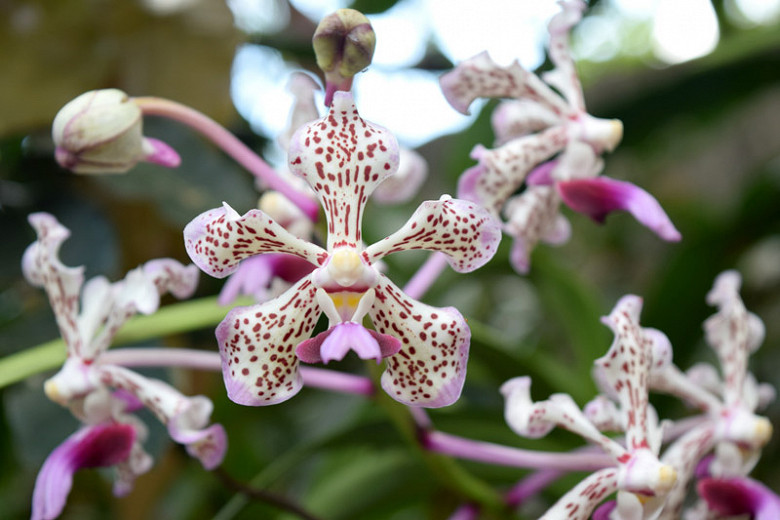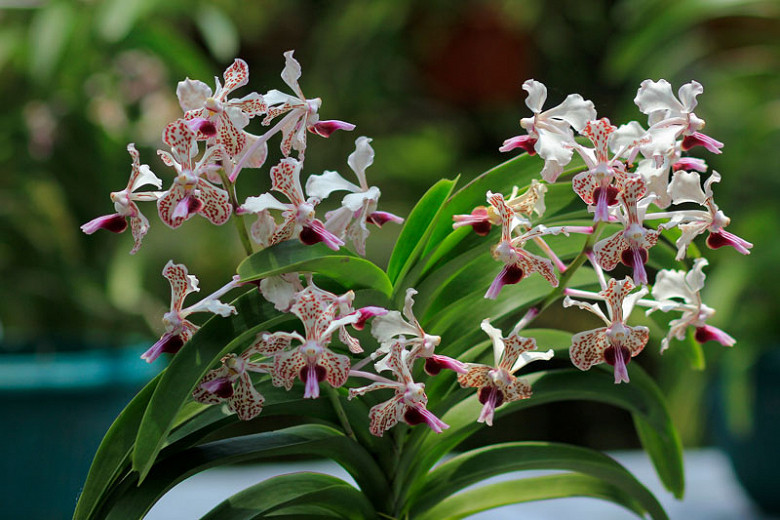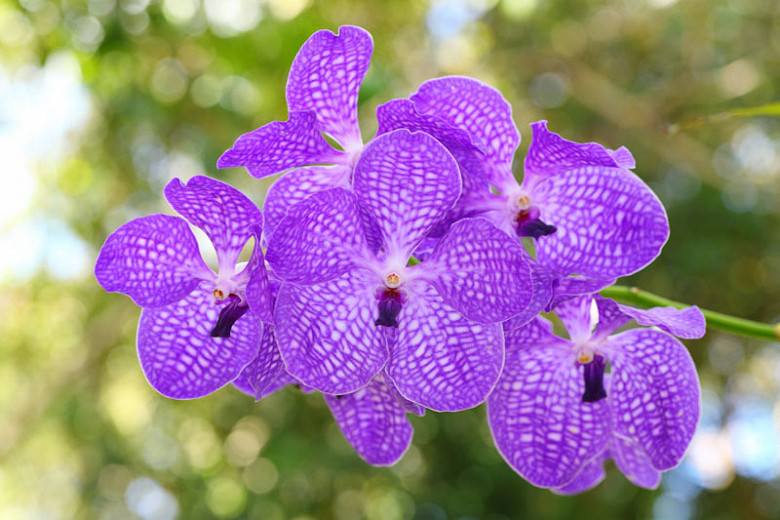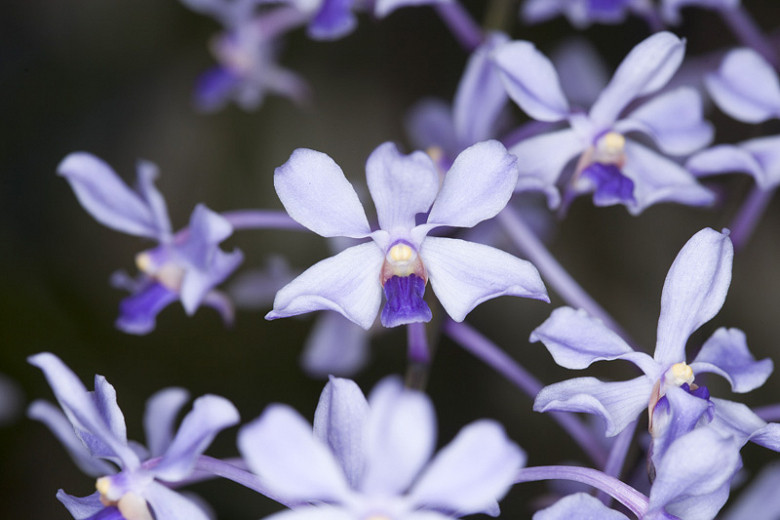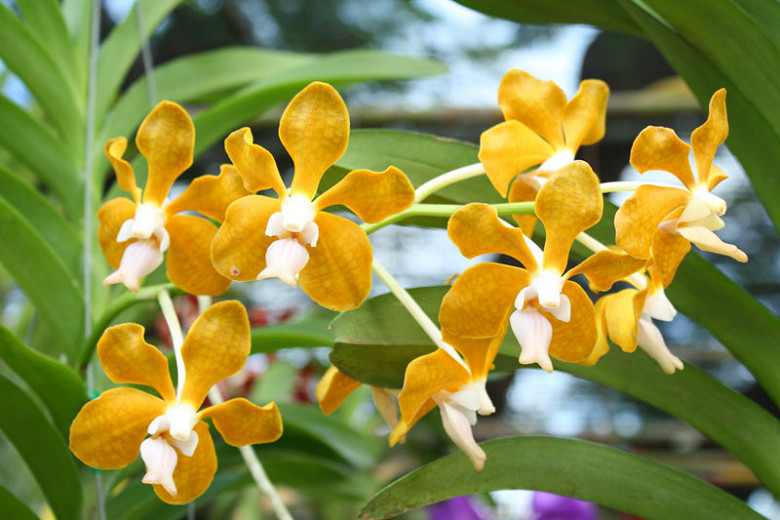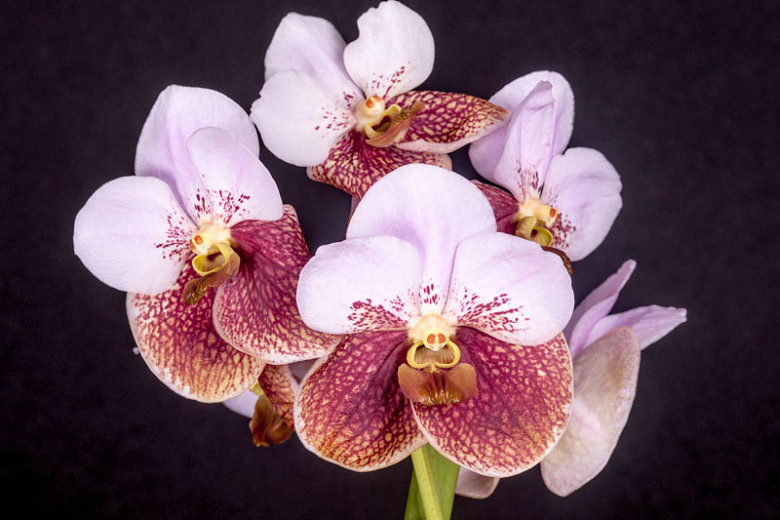Vanda tricolor (Soft Vanda)
Vanda tricolor (Soft Vanda) is an epiphytic orchid species boasting erect to suberect inflorescences giving rise to 6-9 large, fragrant, long-lived flowers. Blooming in the fall and winter, the waxy blossoms, 2-3 in. across (5-7 cm), feature white sepals and petals outside, mottled with cinnamon-red or yellow inside, and a striking mauve or lilac lip.
Vanda tricolor (Soft Vanda) is an epiphytic orchid species boasting erect to suberect inflorescences giving rise to 6-9 large, fragrant, long-lived flowers. Blooming in the fall and winter, the waxy blossoms, 2-3 in. across (5-7 cm), feature white sepals and petals outside, mottled with cinnamon-red or yellow inside, and a striking mauve or lilac lip. The evergreen leaves, 14-18 in. (35-45 cm), are leathery, striped and nicely arched. Native to Java and Bali, Vanda tricolor is a hot growing orchid species found on bright sites, on exposed branches of trees at elevations of 2300-5200 ft. (700-1600 m).
- Grows up to 18 in. tall (45 cm).
- Grows best when exposed to very bright light with some partial shade, especially in midday in summer. Provide good ventilation. Leaves should be a medium green, not dark green. Dark green leaves indicate not enough light.
- Needs a minimum night temperature of 62-64°F (17-18°C) and a daytime temperature of 73-77°F (23-25°C) throughout the year.
- Maintain adequate humidity (80-85%) in summer and early autumn, gradually reducing to almost 65% for 2-3 months at the end of winter and early spring. Set the plant on a tray of gravel, partially filled with water, so that the pot never sits in water.
- Water heavily during the active growth period, making sure the roots always dry quickly after watering. Watering should be gradually reduced in late fall.
- Fertilize with a balanced (such as 20-20-20) fertilizer applied full strength once a week during warm weather or use a one-quarter-strength solution at every watering. During cool or cloudy weather, apply fertilizer once every 2-4 weeks. Use a high-phosphorus fertilizer (such as 10-30-20) every third application to promote flowering.
- Propagate by division when the plant overflows the pot.
- Once the flowers have faded, remove the spent flower spikes.
- Potting is necessary when the rhizome of the plant protrudes over the edge of the pot or the potting medium starts to break down. This should be done in the spring. Use a coarse medium, whether fir bar, tree fern or charcoal, and work it around the roots. Keep shaded, humid, but drier at the roots until new root tips grow. Do not overpot.
- Generally disease free. Keep an eye out for aphids, glasshouse red spider mite and mealybugs.
- Native to Java and Bali.
Tip for reblooming
- Vanda orchids should bloom at least once a year. If your orchid does not flower, move it to a location where it will receive more light and sun. This may resolve the problem.
Requirements
| Hardiness | 12 – 13 |
|---|---|
| Plant Type | Orchids |
| Plant Family | Vanda – Orchids |
| Exposure | Partial Sun |
| Season of Interest | FallWinter |
| Height | 1' – 2' (30cm – 60cm) |
| Water Needs | Average |
| Maintenance | Average |
| Soil Drainage | Well-Drained |
| Characteristics | Fragrant, Showy, Evergreen |
| Garden Uses | Patio and Containers |
